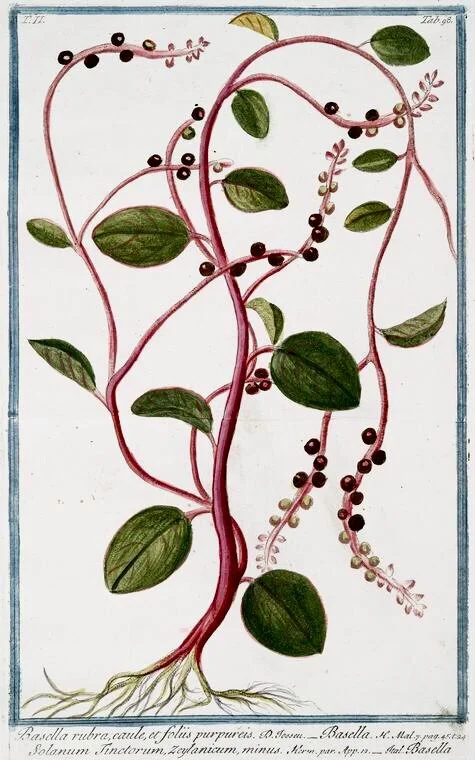Red Malabar Spinach
Red Malabar Spinach
RED MALABAR SPINACH SEEDS
Basella alba rubra
Indigenous to Africa and the southern-most parts of Asia, Malabar Spinach is named for the Malabar region of India. Horticulturally it is peculiar and quite singular, having only one distant relative that was, according to Jack Staub, “an ancient cultivar enjoyed by the Incas, and grown for its potato-like tuber.”
Malabar Spinach is available in either red or not red. Both varieties are botanically known as “alba”, because the people in charge of botanical classification like to confuse us. This seed will produce red-stemmed and red-fruited plants.
It is extremely unlikely that you will need more than one plant of Malabar Spinach in your garden. It is a vigorous grower and in full sun will twine itself around any upright structure available, even a single sturdy post, and left unchecked will sprawl all over whatever else it can find in your garden. It produces astounding quantities of beautiful and tasty succulent leaves that make a suburb substitute for raw spinach in the hot summer months. It is fantastic for nibbling in the garden. Cooked, it is somewhat slimy.
Malabar Spinach requires heat to thrive and to germinate. It should be started indoors several weeks before planting outdoors, after all danger of frost: tuck seeds about 1/4” deep into moist soil, pressing to keep seed snug; cover pot with plastic to maintain moisture and temperature; kept moist in bright light at 80°F, seed will germinate within a few weeks. Germination can be erratic, but is reliable if kept very warm. Cool nights will slow germination significantly. Seedlings are large and succulent right out of the box, but wait for the first set of true leaves before transplanting to individual containers. Keep seedlings warm and in bright light.
Malabar Spinach can be grown in a container if given a little trellis. Keeping the container in part shade will slow its rampant growth in hot summer climates. Cool summer climates will have a hard time keeping the plant happy, especially if not given full exposure.
The little red fruits of Malabar Spinach contain a dye that is safe for use in food as well as textiles.
Packet contains at least 15 seeds.
